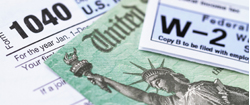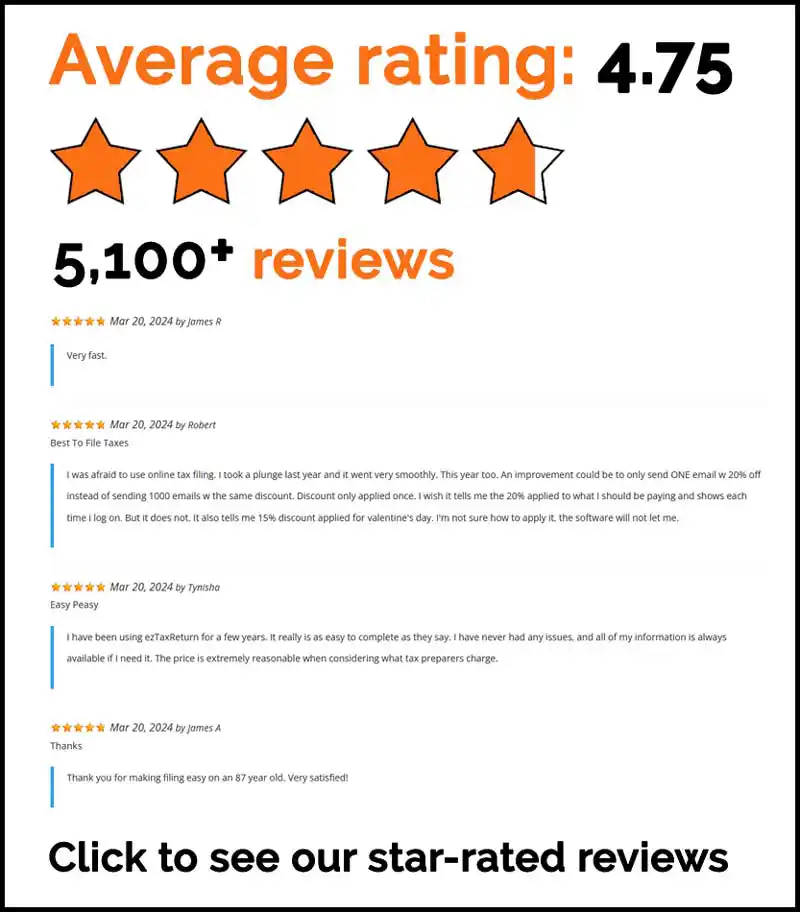Are dental expenses tax deductible? Generally, yes, if they are necessary for medical care and meet IRS guidelines. This article breaks down which dental costs qualify and how to claim them, helping you understand how to potentially reduce your taxable income.
Key Takeaways
- Dental expenses can be tax deductible if they meet specific IRS guidelines, helping reduce your taxable income.
- Routine checkups, necessary surgeries, and transportation costs to dental appointments can qualify for deductions, while cosmetic procedures and over-the-counter products typically do not.
- To claim dental deductions, itemize your expenses on Schedule A of Form 1040 and ensure your total expenses exceed 7.5% of your adjusted gross income (AGI).
Understanding Dental Expense Deductions
Dental expenses can be a significant burden, but did you know they can also be a tax-saving opportunity? Certain medical and dental expenses are tax deductible, which means they can help lower your taxable income. This can be a game-changer for anyone who has had major dental work done in the past year. But how do you know which expenses qualify?
First, understand that not all dental expenses are created equal. To qualify for a deduction, the expenses must meet specific IRS requirements. These include costs for yourself, your spouse, and dependents. Medical and dental expenses encompass a wide range of costs, from premiums and treatments to transportation for medical care. However, expenses paid by insurance cannot be included in your deductions.
Before itemizing your deductions, verify if they exceed the standard deduction to ensure you get the most benefit from your tax return. Knowing which expenses qualify and how to claim them can significantly reduce your tax bill, making dental care more affordable in the long run.
What Dental Expenses Are Tax Deductible?
When it comes to tax deductions, not all dental expenses are eligible. The IRS has specific guidelines on what qualifies as a deductible dental expense. Generally, these expenses must be necessary for medical care and not merely for cosmetic purposes. If your dental expenses meet these criteria, they can help lower your taxable income significantly.
Routine checkups, preventive care, and treatments like oral surgeries are among the common dental expenses that qualify for deductions. These expenses can add up quickly, especially if you have ongoing dental issues. Keeping detailed records and receipts is crucial to support your claims.
To make things easier, we’ll break down the most common types of tax deductible dental expenses in the following subsections: routine dental checkups, dental surgeries and treatments, and travel and transportation costs.
Routine dental checkups
Routine dental checkups are not just essential for maintaining oral health; they can also be tax deductible. These checkups include preventive care such as teeth cleaning, sealants, and fluoride treatments. Regular dental visits help catch potential issues early, saving money on more extensive treatments later.
Deductions for routine dental checkups can lead to significant tax savings, covering costs aimed at prevention and early detection of dental issues.
Next time you schedule a form checkup, keep your receipts and document the expenses.
Dental surgeries and treatments
Medically necessary dental surgeries and treatments are another category of tax deductible expenses. These can include anything from root canals and crowns to more complex procedures like dental implants and gum surgery. If a procedure is deemed necessary for your health, it qualifies as a deductible expense.
If you need artificial teeth or a crown due to a medical condition, these expenses can be included in your tax deductions. Knowing which treatments are deductible can significantly reduce your taxable income, making necessary procedures more affordable.
Travel and transportation costs
Travel and transportation costs related to receiving dental care can also be tax deductible. This includes costs for driving to and from dental appointments, as well as lodging expenses if you need to travel out of town for treatment. For these expenses to qualify, the trip must be primarily for receiving dental care.
Out-of-pocket expenses such as gas, parking fees, and tolls can be included as deductions. Additionally, lodging expenses of up to $50 per night per person are deductible if they are essential to the medical care provided.
Non-Deductible Dental Expenses
Not all dental expenses qualify for tax deductions. It’s important to know which expenses are non-deductible to avoid mistakes when filing your tax return. Generally, expenses related to cosmetic surgery and over-the-counter dental products do not qualify for deductions.
Cosmetic procedures, such as teeth whitening, are considered non-deductible because they are not deemed medically necessary. Similarly, over-the-counter dental products like toothpaste and mouthwash are classified as general health products and are not eligible for tax deductions.
Cosmetic dental procedures
Cosmetic dental procedures are generally not deductible under tax laws. Treatments like teeth whitening are classified as cosmetic because they are not necessary for health reasons. Therefore, any expenses incurred for such procedures cannot be claimed as tax deductions.
This means that even if you spend a considerable amount on cosmetic dental work, you won’t be able to deduct these expenses from your taxable income. Differentiate between medically necessary treatments and cosmetic enhancements when planning your dental care budget.
Over-the-counter dental products
Over-the-counter dental products, including items such as toothpaste and mouthwash, are not eligible for tax deductions. These products are considered general health items rather than medical expenses, making them non-deductible.
Although essential for daily dental hygiene, these products do not meet the criteria for tax deductions. To maximize your dental expense deductions, focus on tracking expenses for prescribed treatments and medically necessary dental procedures.
Calculating Your Dental Expense Deduction
Calculating your dental expense deduction involves determining your adjusted gross income (AGI), as only the portion of medical and dental expenses exceeding 7.5% of your AGI is tax deductible. This threshold decides how much of your expenses you can claim.
Once you have your AGI, subtract 7.5% of this amount from your total medical and dental expenses. The remaining amount is what you can deduct on your tax return. This process requires careful record-keeping and accurate calculations to ensure you claim the correct amount.
Deciding between itemizing your deductions and taking the standard deduction is key. Itemizing is beneficial if your total deductions exceed the standard deduction amount, significantly impacting your tax savings. Make tax season easy—use ezTaxReturn today!
Determining your AGI
To determine your adjusted gross income (AGI), total all sources of income and make certain adjustments before applying the 7.5% threshold, as only expenses exceeding this threshold qualify for a deduction.
For example, if your AGI is $80,000, you would multiply this amount by 7.5% to get $6,000. Only the expenses that exceed 7.5 can be deducted. Detailed records of your expenses throughout the year will help accurately calculate the deductible amount.
Itemizing vs. standard deduction
For tax deductions, you can either itemize your deductions or take the standard deduction. Itemize your deductions to deduct dental expenses, as it’s a requirement for claiming those costs. This involves detailing each expense on Schedule A of Form 1040 and ensuring that your total itemized deductions exceed the standard deduction.
Itemizing can be beneficial if your total deductions, including dental expenses, are higher than the standard deduction available for your filing status. If unsure whether to itemize or take the standard deduction, using ezTaxReturn can make the decision easy. When you file your taxes with us, we automatically compare both so you can choose the option that gives you the most savings.
Claiming Dental Expenses on Your Tax Return
Claiming dental expenses on your tax return requires you to itemize your deductions using Schedule A of Form 1040. This process involves detailing the specific amounts of your eligible medical and dental expenses and ensuring they exceed the 7.5% AGI threshold.
To report your dental expenses, you will need to:
- Calculate your total itemized deductions, including all medical expenses.
- Compare your itemized deductions to the standard deduction.
- If your itemized deductions are higher, you can claim these expenses on your tax return, potentially lowering your taxable income significantly.
Let ezTaxReturn handle the forms and math—file your taxes effortlessly and maximize your refund today!
Required documentation
To claim dental expenses, you need to maintain detailed documentation of all your dental treatments and payments. This includes receipts, statements, the types of procedures performed, payment amounts, and dates of service. Organized records will make it easier to substantiate your deduction claims.
It’s advisable to keep all receipts and documentation for at least three years, as the IRS may require proof of your expenses during an audit.
Filing with Schedule A
When filing your tax return, you will need to itemize your deductions on Schedule A of Form 1040 to claim dental expenses. Only medical expenses exceeding 7.5% of your AGI can be deducted on Schedule A. This means you need to calculate your total medical and dental expenses and subtract 7.5% of your AGI from this total to determine the tax deductible amount.
Special Considerations for Dental Insurance Premiums
Dental insurance premiums can also be considered for tax deductions, but there are special considerations depending on your situation. To claim these premiums, you need to itemize your deductions. Out-of-pocket payments for dental insurance premiums can be included in your medical expense deductions, providing additional tax savings.
It’s essential to understand the specific conditions that apply to deducting dental insurance premiums, whether they are employer-provided or for self-employed individuals.
Employer-provided insurance
Employer-provided dental insurance premiums can be deductible under certain conditions. To qualify, you must meet specific IRS requirements related to your AGI and total medical expenses. When itemizing, include health insurance premiums after accounting for any premium tax credits.
Self-employed individuals
Self-employed individuals can deduct dental insurance premiums if they report a net profit from their business. This deduction requires the individual to show a net profit, establishing eligibility for the deduction. Additionally, self-employed individuals using COBRA can fully deduct the cost of their premiums.
Tips for Maximizing Your Dental Expense Deductions
Maximizing dental expense deductions can lead to significant tax savings. Schedule multiple dental procedures within the same tax year to exceed the 7.5% AGI threshold, helping claim a larger deduction and reduce taxable income.
Detailed records of all dental expenses, including travel and transportation costs, ensure you don’t miss potential deductions. By understanding the rules and staying organized, you can make the most of your dental expense deductions.
Summary
Claiming dental expense deductions can lower your taxable income and lead to significant tax savings. By understanding which expenses qualify and how to claim them, you can make dental care more affordable.
Remember to keep detailed records of all your dental expenses, including routine checkups, necessary treatments, and travel costs. Deciding between itemizing your deductions and taking the standard deduction is crucial in maximizing your tax benefits.
Want to save on your taxes this year? Don’t miss out on dental expense deductions! Get started today and see how these write-offs can lower your taxable income.
Frequently Asked Questions
Are cosmetic dental procedures tax deductible?
Cosmetic dental procedures are usually not tax deductible unless they are considered medically necessary. So, if you’re just looking for a smile upgrade, unfortunately, you’ll be footing the bill without any tax relief.
How do I claim dental expenses on my tax return?
To claim dental expenses on your tax return, you’ll need to itemize your deductions on Schedule A of Form 1040. Make sure to keep all your receipts handy!
What documentation do I need to claim dental expenses?
To claim your expenses, make sure to keep all receipts, treatment statements, and detailed records of your payments. Having this documentation will make the process smooth for you.
The articles and content published on this blog are provided for informational purposes only. The information presented is not intended to be, and should not be taken as, legal, financial, or professional advice. Readers are advised to seek appropriate professional guidance and conduct their own due diligence before making any decisions based on the information provided.




